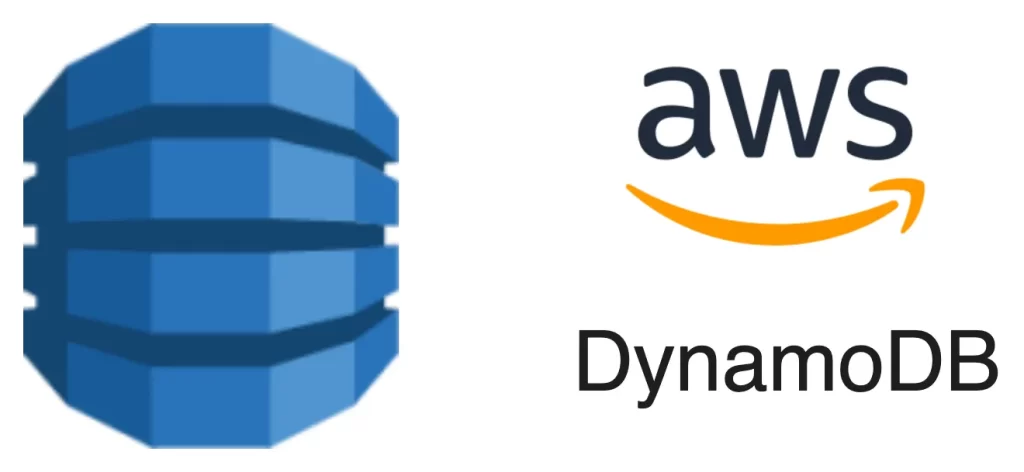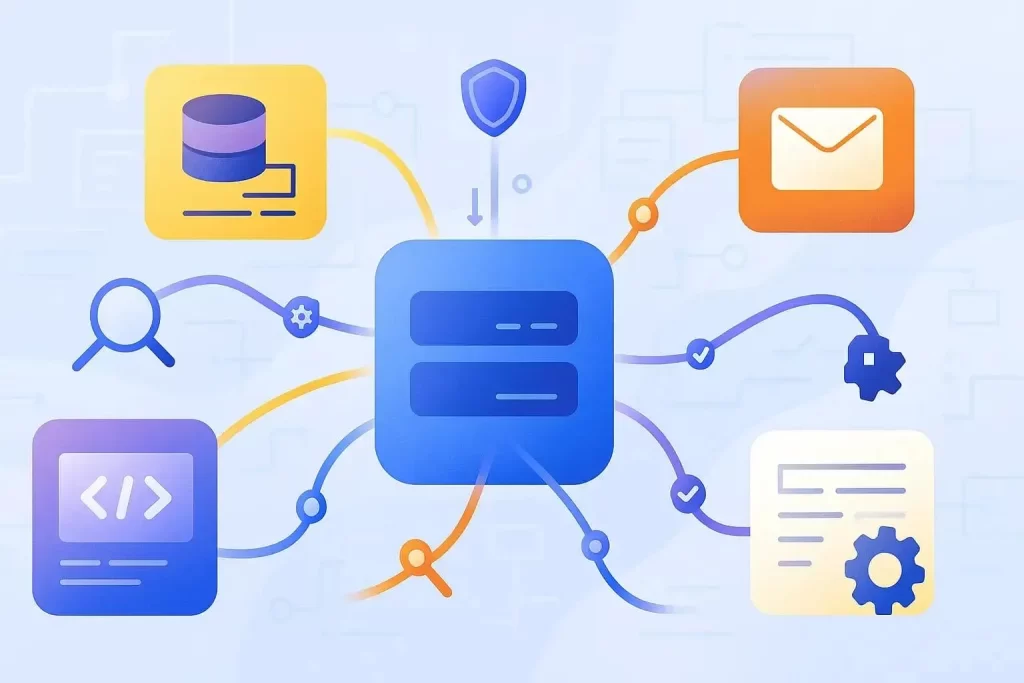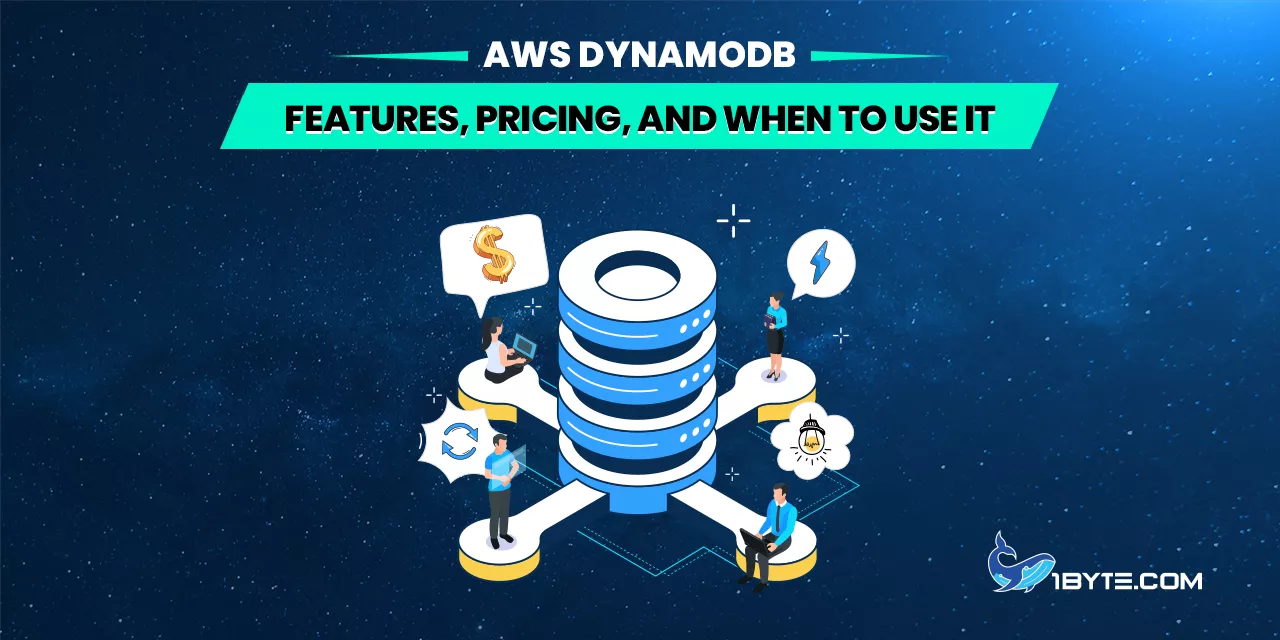AWS DynamoDB is Amazon’s fully managed NoSQL database. It is serverless and cloud-native. Teams do not have to maintain or provide servers or databases. It provides high-performance (usually single-digit milliseconds latency) at any scale. DynamoDB is a flexible, schemaless, key-value and document data model. By default, data is automatically encrypted at rest and replicated across multiple availability zones to be durable. All these render DynamoDB suitable to internet-scale applications. Actually, AWS indicates that more than one million customers rely on DynamoDB to operate high-performance and low-latency applications.
Read 1Byte to learn more about this article.

Key Features of AWS DynamoDB
DynamoDB is a fully managed, serverless NoSQL service. This means AWS handles the infrastructure. Users don’t manage any servers, storage, or maintenance windows. The service automatically scales compute and storage to meet demand. It delivers consistent single-digit millisecond latency at any throughput level. This high performance is built on fast SSD storage and horizontal sharding.
Flexible Data Models
DynamoDB has flexible data models. You are able to store structured, semi-structured or unstructured data. Every item contains a primary key and you can add optional sort keys or secondary indexes to more complex queries. The schema is free to develop with the changing needs. As an illustration, developers can add new attributes to items without down time. This flexibility does not use strict table schemas and allows teams to iterate quickly.
Built-in Security and Durability
DynamoDB offers inbuilt security and stability. The default encryption of all data is done using AWS Key Management Service. AWS-owned, AWS-managed, and customer-managed encryption keys are available to customers. The service copies data in three Availability Zones in every region. This provides 99.999% of availability per region and safeguards against zone failures.
Point-in-time Recovery
DynamoDB also provides point in time recovery (PITR) and on demand backup. A table can be restored any second in the past 35 days, which is useful to overcome accidental deletes or writes.
Global, Multi-region
In case of global, multi-region applications, DynamoDB has Global Tables. Global Tables offer active-active replication in the regions of your selection in AWS. It is possible to read and write to the same table in more than one region with single-digit milliseconds latency. AWS is in charge of synchronization and conflict resolution. Due to the complete multi-activity of global tables, applications receive local access to data on a global basis. According to AWS, this offers 99.999% regional availability and must be included in global resiliency plans. Simply put, DynamoDB enables serving customers worldwide with low latency.
Supports ACID Transactions
DynamoDB also allows complex operations to be performed using ACID transactions. You are able to do coordinated all-or-nothing updates on several items and tables in a single request. This enables the developers to keep the data integrity where required, despite the fact that DynamoDB is essentially a NoSQL store. As an example, it is safe to update multiple records in a single atomic transaction with financial or inventory applications. This transactional support expands the DynamoDB usage to additional mission-critical workloads.
Additional interesting characteristics are DynamoDB Accelerator (DAX) in-memory caching, streams in capturing changes, and close integration with AWS services. DAX has the ability to accelerate hot item reads to microsecond latency. Updates can be fed to Lambda or analytics services by DynamoDB Streams. AWS offers connectors to import/export data, connect with Redshift, Glue, etc. These characteristics make DynamoDB a fit in the current event-driven architectures.

AWS DynamoDB Pricing
DynamoDB uses a pay-for-what-you-use pricing model based on throughput, storage, and extra features. The service charges separately for reads, writes, and data storage. There are two main pricing modes:
- On-Demand Capacity Mode: It is an auto-scaling, serverless mode. You are charged on a per-read request unit (RRU) and write request unit (WRU) basis on which your application is used. On-demand mode does not need capacity planning: as traffic increases or decreases, DynamoDB automatically scales to the load. It is suggested in new or erratic workloads. E.g. when your traffic suddenly spikes, DynamoDB on-demand scales instantly and does not throttle. On-demand does not require a minimum usage: when you make zero requests, you do not pay. It is important to note that AWS recently reduced on-demand prices by half (Nov 2024) so this mode is highly affordable in many applications.
- Provisioned Capacity Mode: In this mode, you predetermine the number of read capacity units (RCUs) and write capacity units (WCUs) you require. That capacity is charged on an hourly basis whether used or not. The mode is most suitable in the case of predictable, constant traffic. Auto scaling can also be enabled to scale provisioned capacity in accordance with usage patterns. You receive reduced per-request costs in exchange for making a commitment to capacity. AWS also has the option of provisioned mode with reserved capacity discounts (up to 77% off) on 1 or 3-year commitments.
Other costs can be applicable in either mode. You are charged on a per GB/month basis of data storage. You also pay optional features: e.g. global tables will charge replicated write unit (rWCU) charges, on-demand and continuous backups are charged per GB, inter-region or outbound data transfer and the use of DAX or Streams are charged. AWS offers a free online pricing calculator to estimate the monthly costs depending on your configuration.
DynamoDB has a free tier. AWS provides 25 GB of data storage, 25 WCUs, and 25 RCUs free of charge every month. This is best suited to developers or light loads. Once you have reached free tier, you are charged as usual.
Another way to save money is by selecting table classes. In tables where data are rarely accessed, DynamoDB Standard-Infrequent Access (Standard-IA) class will reduce storage expenses by approximately 60%. It can be applied to archival or historical data (such as ancient logs or archives). The prices of read/write requests are higher in Standard-IA and hence it is suitable in data where most of the data is read infrequently. Classes of switching tables are simple to switch and have no downtime.
Price Reductions
AWS announced significant price cuts in late 2024. On November 1, 2024, on-demand read/write pricing was slashed by 50%. Write replication for global tables was cut by 67%. These reductions make heavy workloads much cheaper. AWS stated that for most use cases, on-demand mode now costs less than provisioned. This means many companies can save money by shifting to on-demand billing. Overall, DynamoDB’s pricing now offers more value per cost, especially for unpredictable workloads.
When to Use AWS DynamoDB (Use Cases)
DynamoDB is bright in the applications which require high throughput and low latency at scale. It is a logical choice when you anticipate huge, international user bases or extremely unpredictable traffic. AWS and analysts list gaming, content streaming, mobile/web backends, financial transactions, and IoT workloads as some of the common use cases. The following are some of the common uses of DynamoDB:
Gaming
Millions of players are often sending rapid reads and writes (e.g. player state, leaderboards) online. DynamoDB is able to deal with this easily because it is horizontally scaled and has low latency. An example is that gaming companies such as Electronic Arts and Capcom store game state and user profiles in DynamoDB. In another instance, EA has moved one of its major workloads to DynamoDB and reduced database expenses by approximately 90 percent relative to its previous MySQL installation. Small gaming studios do not lose: PennyPop released their game on DynamoDB and reached 80,000 requests per second with a small team.
Content Streaming and Media
Services that stream video or media to users around the world need multi-region availability and burst capacity. DynamoDB’s Global Tables enable replicated data in every region, ensuring low-latency access. Companies like Netflix, Hulu, and Disney use DynamoDB to power parts of their streaming infrastructure. The database can absorb sudden traffic spikes when popular content releases, without manual intervention, because on-demand mode automatically scales.
Finance and Payments
Banking, trading, and fintech apps need speed and accuracy of data. DynamoDB has good consistency when required and supports high throughput. DynamoDB is used by banks to provide real-time account information and ledgers. As an illustration, Capital One and mobile payment applications such as Robinhood are using DynamoDB to provide mobile banking and trading, where balances and orders of customers are updated in real time. The DynamoDB transaction support of the ACID facilitates the reliability of financial updates.
Web and Mobile Applications
DynamoDB is also used as the backend database in many large-scale web services. The simple data patterns (users, sessions, preferences) of modern web/mobile apps are often in demand of high scale. The managed nature of DynamoDB allows developers to work on application code. The most notable ones are Duolingo (language learning), Airbnb (hospitality), and Tinder (dating) – all of which operate DynamoDB to process millions of users with high performance.

Internet of Things (IoT) and Telemetry
The IoT devices generate unpredictable and bursty streams of data. This telemetry can be scaled to DynamoDB, which is commonly used with AWS IoT Core and Kinesis. It is not a time-series database, but with a good data modeling, it can be used to store the IoT events effectively. DynamoDB is used by companies such as BMW, GE, and Verizon to gather and process sensor data and data on connected devices. Its auto scaling without a server is used in case of sudden surges in devices.
Overall, DynamoDB should be selected when your workload is in a NoSQL key-value format and it needs to be high-performing. It works best when you require: high scale read/write, distributed globally, or a serverless, managed database experience. Applications with unpredictable or spiky traffic should be used on-demand mode. Provided mode (auto scaling) should be used when the traffic is predictable or constant.
On the other hand, DynamoDB might not be the most suitable solution in case you require complex relational queries, ad-hoc joins or bulk analytics on the database itself. A relational database or a dedicated service (such as Redshift as an analytics service) could be more suitable in such cases. However, DynamoDB provides massive operational simplicity to the appropriate workloads.
Conclusion
AWS DynamoDB offers a powerful mix of performance, scalability, and ease of use for NoSQL workloads. Its serverless design, which is fully managed, allows enterprises to concentrate on innovation rather than infrastructure. The cost has been further enticed by the recent price reductions. The automatic scaling, encryption, and global replication, as well as ACID transactions, are the built-in features of DynamoDB that make it appropriate to mission-critical applications.
DynamoDB should be considered by decision-makers to develop applications that are always-on and can support high traffic. The service is supported by the industry examples: big companies such as United Airlines and BMW already use DynamoDB as the key systems. The pricing (pay-as-you-go, with a free tier) and scalable capacity give it financial predictability.
In summary, AWS DynamoDB is a leading NoSQL database for high-performance, distributed applications. It is particularly powerful when it comes to workloads such as gaming backends, media streaming, IoT, and real-time web/mobile services. DynamoDB is an excellent option among enterprise developers when an application requires smooth scaling and low operational costs.

